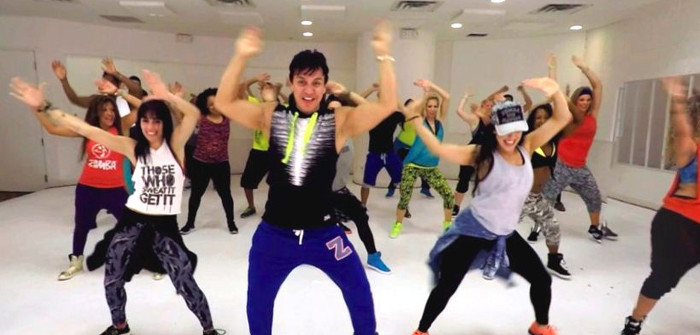
When Zumba burst on to the scene in the early 2000s, it dramatically changed fitness in America. The company cemented its place as a juggernaut within its industry through innovative practices, and its founders haven’t lost that sense of innovation.
Today, the company is exploring how to keep the fitness craze thriving through their latest venture—virtual reality. Users can now experience a Zumba class from the point of view of an instructor, or from the perspective of a student.
Zumba in the 21st century
Since the inception of Zumba, conventional aerobics class soundtracks have quickly been replaced in favor of Latin beats and rhythms, and a fun new exercise craze has taken the world by storm. It is estimated that over 15 million people take Zumba classes on a weekly basis, at close to 200,000 different locations around the globe, but the company is not satisfied with complacency, and they are using virtual reality to lure in new potential customers.
In a recent article, Alberto Perlman, co-founder of Zumba, said “We tried the virtual reality demo in the office and every guy who put the headset on started dancing, and that never happened with videos.†He continued, “Virtual reality is a great way to show people what the Zumba experience is like. A lot of people don’t know what it’s like to be in a Zumba class, and you can only see so much in 2D.â€
Zumba’s virtual reality experience consists of 360-degree video, audio featuring the instructor giving directions, and a signature Zumba soundtrack. The length of the experience is about three and a half minutes. It is accessible on most current virtual reality headsets, including the Samsung Gear VR and Oculus Rift, and, on Android phones, via a Google Cardboard-compatible headset and the YouVisitVR app. Users who do not have access to a virtual reality headset can also view it on YouVisit’s website.
The reason Perlman and his partners have chosen to work with virtual reality is that they view it as a powerful tool for marketing and sales, but they also understand that as their target demographic (women between the ages of 25 and 50) becomes more tech-savvy, it’s important that the company evolves with them. Over the the course of the last two decades the ways people consume exercise related media has evolved. It’s gone from videotapes, to DVDs, to video games, and even streaming. Many experts believe that virtual reality can be the next step in at-home-exercise media consumption.
The marketing of tomorrow, today
Virtual reality is the next frontier that marketing teams from every business sector should seek to conquer. In fact, in many industries they have already begun. From companies in tourism and hospitality, to the fitness industry, marketing experts are racing to find ways to incorporate virtual reality into their campaigns.
One example is Thomas Cook’s “Try Before You Fly†campaign. The United Kingdom-based company launched a campaign that let would-be travelers explore destinations with virtual reality headsets from its brick-and-mortar stores.
The higher education sector has also harnessed the power of virtual reality. As part of a recruitment strategy, the Savannah College of Art and Design (SCAD) mailed 5,000 custom-designed cardboard virtual reality headsets to prospective students. Students were able to use these headsets with their smartphones to explore the school’s diverse locations, including Atlanta and Savannah, Ga., Lacoste, France, and Hong Kong.
Suzanne Sanders, director of marketing at YouVisit, said many industries are experimenting with virtual reality. In her view, virtual reality has the power to change the way companies connect with their customers. She said by allowing users to experience engaging, immersive content, any company can entice a potential customer into wanting to try their product.
Zumba shares this idea, and has identified the opportunities that virtual reality is creating, one of which is already on the horizon in the form of a 7,000-person Zumba Fitness Concert.
- User-created content key to mainstream VR - January 28, 2016
- How to market with Google Cardboard - September 1, 2015
- Zumba turns to virtual reality - August 22, 2015
